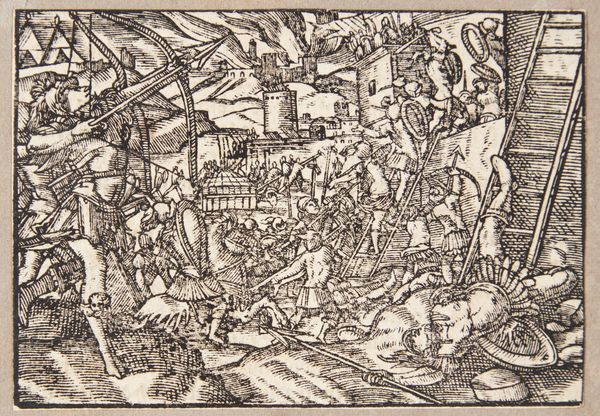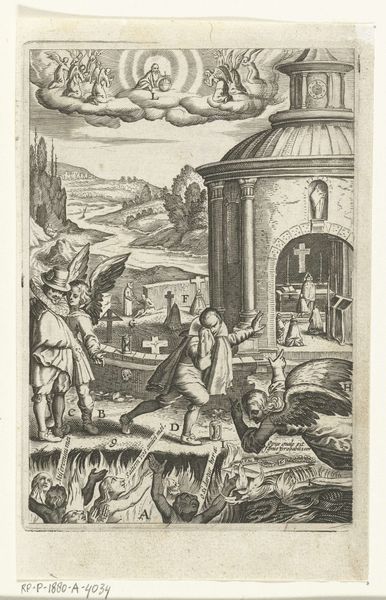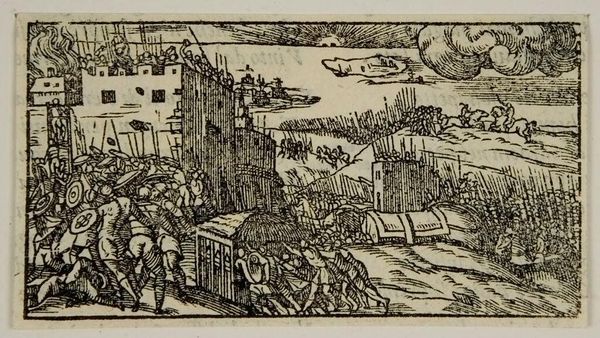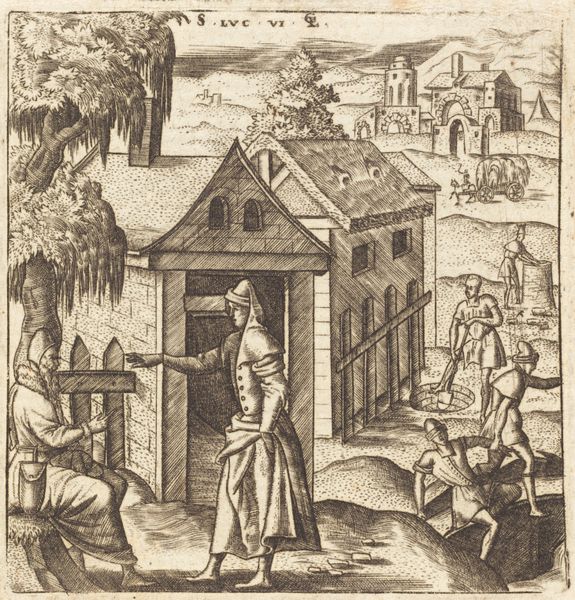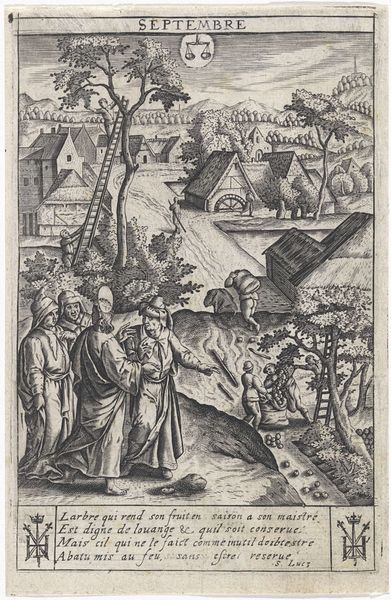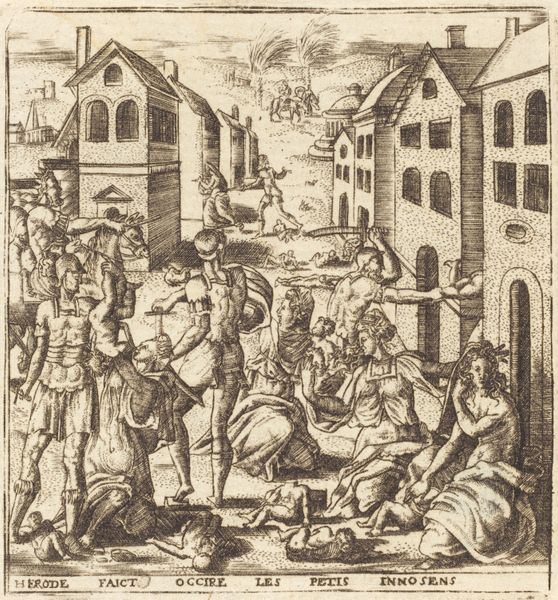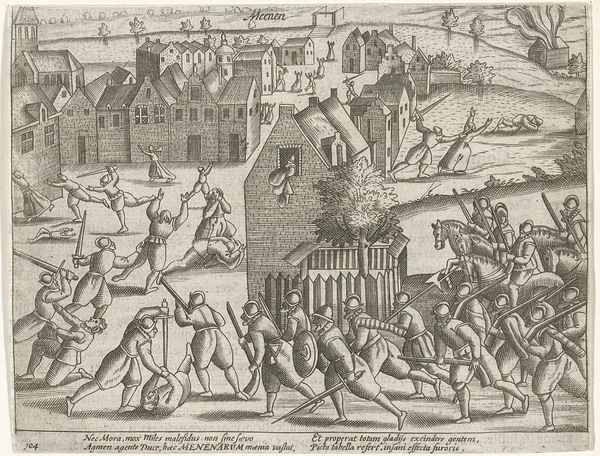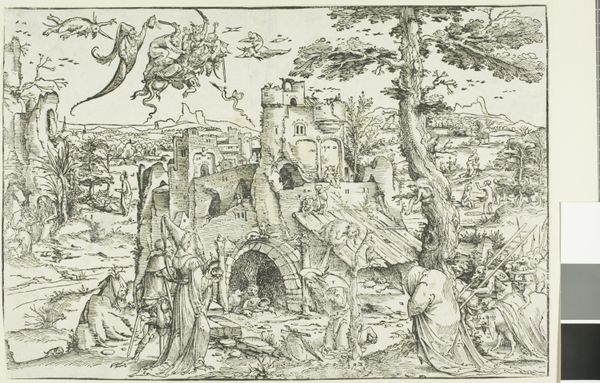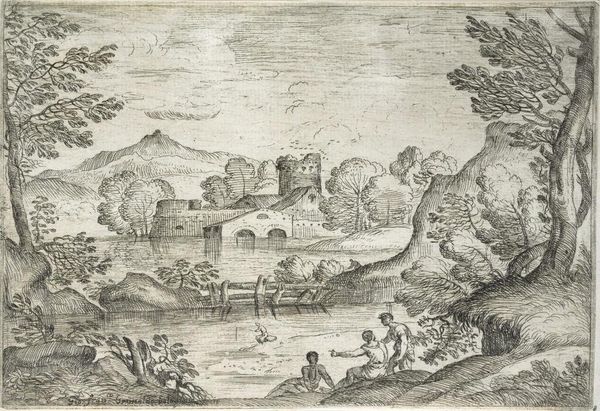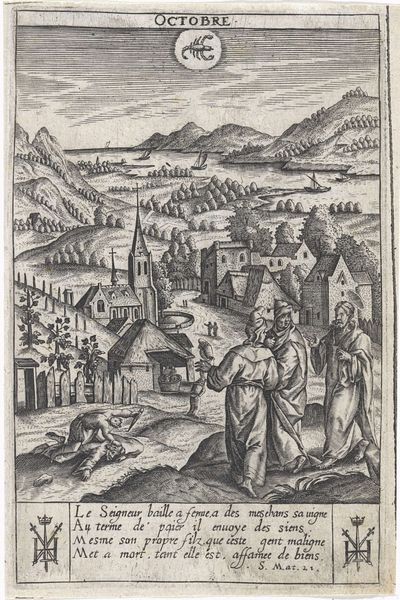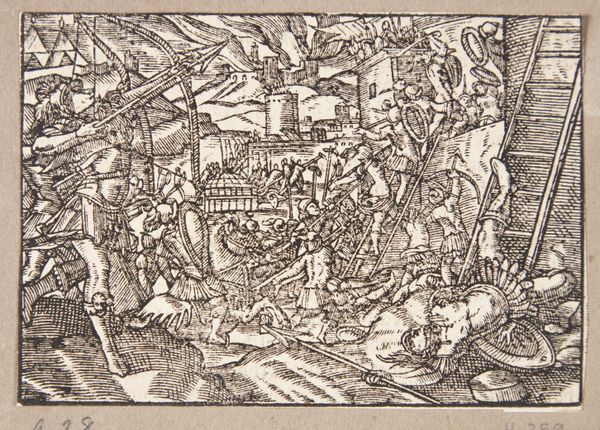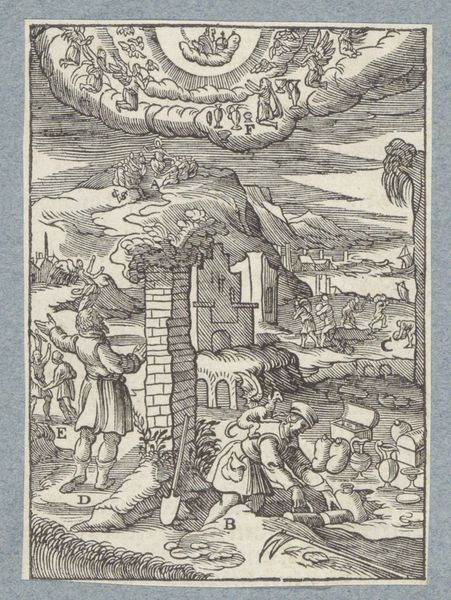
print, engraving
#
pen drawing
# print
#
landscape
#
line
#
genre-painting
#
northern-renaissance
#
engraving
#
realism
Dimensions: height 60 mm, width 229 mm
Copyright: Rijks Museum: Open Domain
Editor: So, here we have "Augustus," an engraving from somewhere between 1554 and 1641, currently held at the Rijksmuseum. It's incredibly detailed, this whole scene of people harvesting crops. It really emphasizes the labor and work it takes to produce food. What aspects of this print do you find particularly interesting? Curator: Well, look at the materiality of it – an engraving, a print. This wasn't some singular masterpiece crafted for a wealthy patron. Prints democratized imagery. We're looking at a technology that enabled widespread dissemination of ideas about labor and landscape. How does the choice of this medium influence your understanding? Editor: I hadn’t really thought about the medium like that, more just about the visual aspects. So, by being a print, it implies a wider audience, more of a mass production of the image itself? Curator: Exactly. And think about the depicted labor: this wasn’t some romanticized view of peasantry. It's a pretty straightforward depiction of agricultural work. Consider where this image might have circulated. Was it intended for those involved in agriculture or those distanced from it? Editor: That’s a good point. Maybe those removed from farming would see a detailed rendering like this, and appreciate all that goes into feeding a population. Does the name “Augustus” have any implications, beyond being the name of the month? Curator: The title does suggest something, doesn't it? "Augustus," a Roman Emperor… and harvest! Consider the potential relationship between imperial power, agricultural production, and societal sustenance. How might viewers at the time have connected these elements? It certainly wasn’t random. Editor: This has made me rethink the piece. I was so focused on the individual scene, that I missed thinking about it more broadly in relation to society. It shows you how much the materials and even production methods can shift how we understand art. Curator: Precisely! Analyzing art through its production and consumption gives us a far richer perspective. We begin to see art less as isolated creation, and more as deeply embedded within material and social realities.
Comments
No comments
Be the first to comment and join the conversation on the ultimate creative platform.
